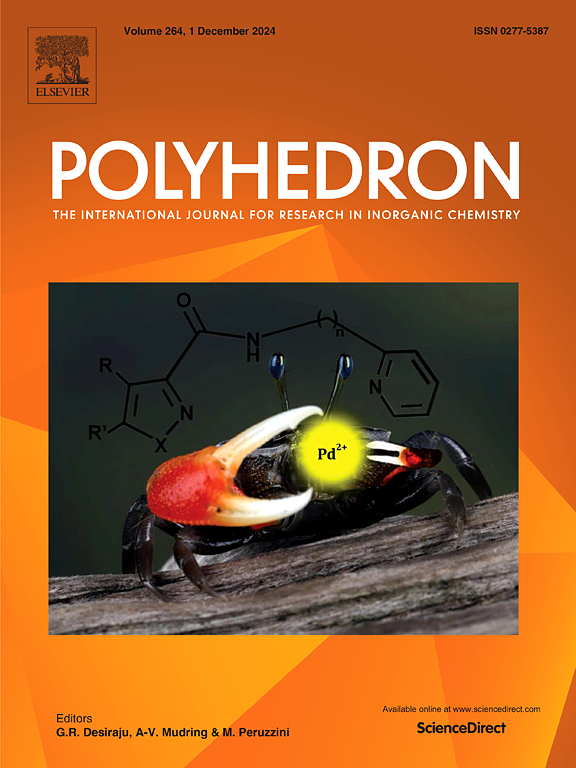Effect of polymer combustion synthesis on thermal, spectroscopic, structural, and magnetic properties of Co3O4 nanoparticles
IF 2.4
3区 化学
Q2 CHEMISTRY, INORGANIC & NUCLEAR
引用次数: 0
Abstract
We synthesized Co3O4 nanoparticles using polyethylene glycol by polymer combustion method. The pristine sample was annealed at 300, 500 and 800 °C. Fourier transform infrared spectroscopy (FTIR) was used to investigate the molecular mechanisms of degradation process in connection with thermal gravimetry (TG) and Differential Thermal Analysis (DTA). Raman studies indicate the shifting of all modes of Co3O4 towards the higher wave number indicating the interaction between Co3O4 nanoparticles and polymer matrix; supports the FTIR observation. Transmission Electron Microscopy (TEM) analysis show formation of single crystalline spinel phase. The magnetic properties are discussed in correlation with FTIR with respect to behavior of polymer. Highest coercivity of 214 G was observed for Co3O4 nanoparticles annealed at 300 °C from that of bulk Co3O4. The anomalous magnetic behavior observed in 300 °C annealed sample seems to be due to surface adsorption of OH groups and degradation of polyethylene glycol into hydroperoxide and conjugated double bond [![]() C
C![]() C
C![]() ]. The conjugated C
]. The conjugated C![]() C due to collective states of the π-electrons in the polymeric matrix may be involved in the magnetic behavior.
C due to collective states of the π-electrons in the polymeric matrix may be involved in the magnetic behavior.

求助全文
约1分钟内获得全文
求助全文
来源期刊

Polyhedron
化学-晶体学
CiteScore
4.90
自引率
7.70%
发文量
515
审稿时长
2 months
期刊介绍:
Polyhedron publishes original, fundamental, experimental and theoretical work of the highest quality in all the major areas of inorganic chemistry. This includes synthetic chemistry, coordination chemistry, organometallic chemistry, bioinorganic chemistry, and solid-state and materials chemistry.
Papers should be significant pieces of work, and all new compounds must be appropriately characterized. The inclusion of single-crystal X-ray structural data is strongly encouraged, but papers reporting only the X-ray structure determination of a single compound will usually not be considered. Papers on solid-state or materials chemistry will be expected to have a significant molecular chemistry component (such as the synthesis and characterization of the molecular precursors and/or a systematic study of the use of different precursors or reaction conditions) or demonstrate a cutting-edge application (for example inorganic materials for energy applications). Papers dealing only with stability constants are not considered.
 求助内容:
求助内容: 应助结果提醒方式:
应助结果提醒方式:


